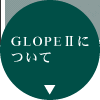予定表 -詳細情報-
| 件名 | LS Luigi Curini氏 |
| 開始日時 | 2011年 10月 18日 (火曜日) 12時15分 (GMT+09:00) |
| 終了日時 | 2011年 10月 18日 (火曜日) 12時50分 (GMT+09:00) |
| 場所 | 1号館401教室 |
| 詳細 | GLOPE II ランチタイムセミナー 【日時】 10月18日(火) 12:15〜12:50 【場所】 1-401教室 【報告者】 Luigi Curini氏(GLOPE II 国際研究員/Universit醇A degli Studi di Milano) 【タイトル】The role of valence issues in party-competition focused on corruption issues: a (wide) comparative analysis using electoral manifestos 【概要】 Abstract: Despite the growing interest in investigating the causes of political corruption, far less attention has been devoted to analyze the conditions under which political actors have an incentive to highlight corruption issues in electoral competition. Do parties talk about corruption just as a reaction to exogenous factors (i.e. scandals reported in the press)? Or are there explicable regularities in the way parties emphasize the issue during their confrontation? Assuming that corruption is a case of valence issue (i.e. an issue universally supported/disclaimed by electors) we put our investigation into the framework of a one-dimensional model. On this basis we are led to the hypothesis that, in the case of political corruption, such an incentive exists only for non-cabinet parties that are nearest neighbors of a cabinet party, and increases with their mutualproximity on the left to right space. Our empirical analysis, based on CMP data, nicely supports our intuition. *The talk will be given in English. |
| カテゴリー | 政治経済学基礎セミナー・ランチタイムセミナー |








